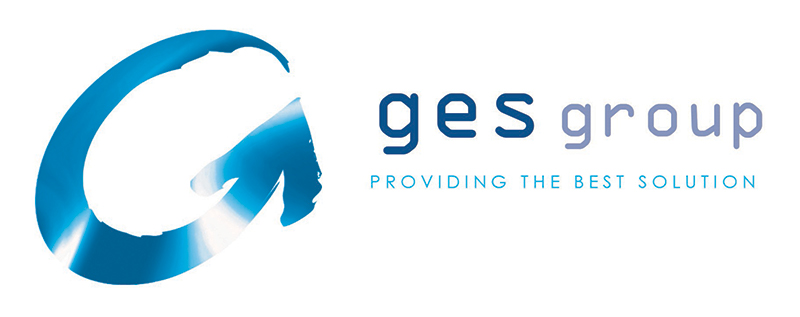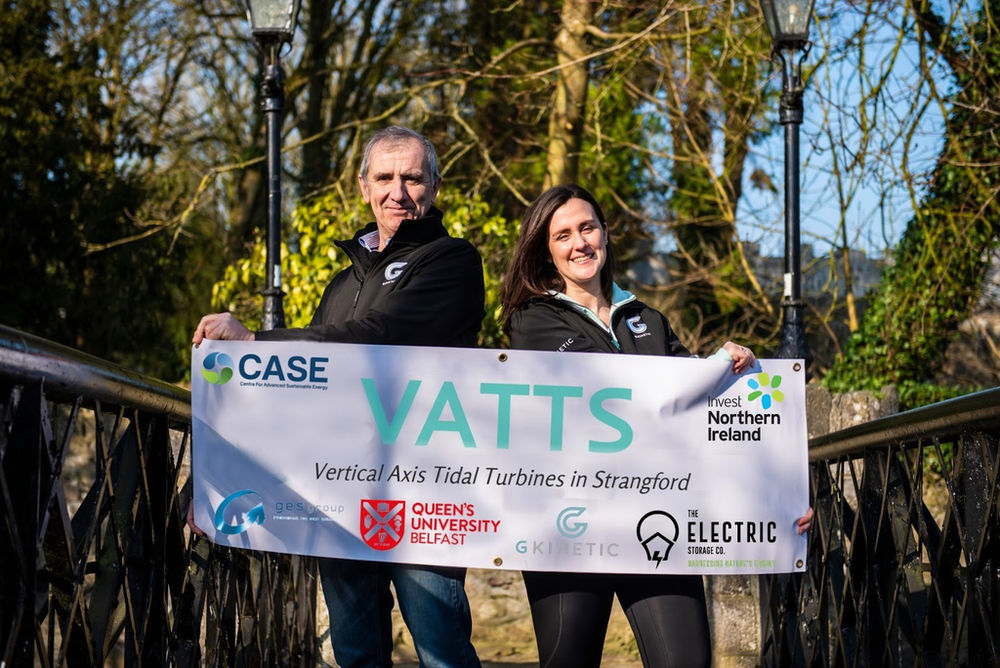The project consortium being led by Queen’s University Belfast, brings together 3 key industry partners; GKinetic Energy who have developed the hydrokinetic turbines, Grant’s Electrical Services (GES) who will lead the development of a battery solution and The Electric Storage Company (TESC), experts in maximising the value of final power delivery and sale of electricity to end users.
The project valued at a total of £490,143 has been supported by the Centre for Advanced Sustainable Energy (CASE)
Sam McCloskey, CASE Director:
“CASE is delighted to support this tidal energy project and the associated G-Kinetic device testing, led by Queen’s University Belfast in Strangford Lough,Northern Ireland. VATTS involves the integration of the tidal energy device with energy storage technology from GES and increased flexibility of power delivery from the Electric Storage Company. Innovation in renewable energy system integration is vital for the long-term decarbonisation of energy. CASE continues to support projects such as this in marine renewables, along with others in energy systems and bio-energy. To date we have funded c.£2m of marine renewable energy research, in support of the Northern Ireland economy.”
Dr Carwyn Frost, Lecturer in Marine Research Group at Queen’s University Belfast:
“The CASE funded VATTS project will harvest the kinetic energy available at the Strangford Lough Tidal Test Site to produce baseload electrical energy at community scale. Commercial success in this sector requires further research and enhanced resource assessment standards are required for floating tidal energy technologies. VATTS will achieve this by developing on the latest standards to validate the Annual Energy Predictions (AEP) for floating tidal energy technology with the actual energy production from the commercial demonstration.
This project shows a collaborative commitment to the blue economy and net-zero agenda on the island of Ireland. Commercial led research is a core part of the Marine Research Group at Queen’s, and the Strangford Lough Tidal Test Site is an ideal incubator and proving ground for floating tidal energy technology. We look forward to working with our industry partners, GKinetic, GES and TECS/PowerOn to deliver this project and drive the technology closer to commercialisation.”
The project will explore ways to tie together the latest energy storage technologies and end user demand profiles, developing a framework for specifying an integrated system to provide an affordable, zero carbon alternative for baseload electricity directly to end users.
A hydrokinetic turbine with integrated energy storage could harvest energy at a site and return to a port or connection point to deliver to the network in an adaptable manner, e.g. deliver to a variety of remote users such as the marine aquaculture sector or offshore charging stations.
Roisin Mc Cormack, COO & Co-Founder at GKinetic Energy had the following to say;
“Our 10kW offering can be deployed and operational within a day, being simply towed out and moored in place just like a boat. We offer a fast, flexible, low impact floating solution that enables people to generate clean, predictable energy from their nearby rivers, canals, estuaries or tidal streams. However, a key market blocker for us is the delivery of the power to end users in a similar fast and flexible way. Traditional subsea cables are not always feasible and, depending on the deployment site, can be expensive. The VATTS project is a really exciting opportunity for us to look at using leading energy storage technologies as an alternative for power delivery and this could accelerate market rollout of tidal energy solutions. We look forward to working with our new partners in Northern Ireland”.
A battery option for power transmission will offer a unique, mobile, low-cost solution that opens up excellent commercial opportunities and accelerates market uptake for tidal technology within Northern Ireland, Ireland and further afield. It is anticipated that by removing the need for a cable shore connection the costs, complexity and environmental concerns are all immediately reduced. GES will lead the power transmission tasks and specification of the battery solution. Speaking with David Moore, CEO of Grant’s Electrical Services (GES GROUP (NI) LTD), he explains their role in the project further:
“As we continually drive to go green, it is our goal to ‘digitise, decarbonise and decentralise’ our energy usage throughout the island of Ireland. We intend to use this concept to develop the model to deliver energy solutions, which will improve our environmental sustainability and reduce marine emissions within the sector. Furthermore, it will also help us understand how to reduce carbon emission and energy consumption toward the Clean Air Strategy 2019 – 2035. The end goal will be to develop an Annual Energy Prediction (AEP) framework for the local community and under the CASE initiative”.
“The control strategy of our storage system is based on modelling storage within the G5/4 SONI transmission regulations (DS3 (Plus)) whilst offering tri-phase energy system balancing model. We believe our approach to be a unique model in association with smart data and trend analysis complementary at the source using our unique energy management software (GEMS).”
“This project will provide for the unique opportunity for concept test in the Marine sector where having the battery element to further improve the flexibility and simplicity of the solution we offer means these excellent deployment sites can become real commercial projects in much less time than would be expected through a traditional network cable reinforcement.”
Getting the power to shore in an innovative, cost effective way will be a huge win but it doesn’t stop there. Speaking to Anne Marie McGoldrick, Co-Founder and Director at The Electric Storage Company;
“The Electric Storage Company will be looking at the various options for how the energy is then integrated into existing networks to deliver the highest value solution to end users. Using data generated from the tidal demonstration, TESC will apply its ‘Predictive Analytical Renewable Integration System’ (PARIS) to maximise the value of the power generated for both the producer and the consumer of the power.”
By pairing battery storage technology with efficient hydrokinetic turbines, the project aims to unlock a largely untapped renewable energy resource and subsequent huge market opportunity where just 1% market share is valued at €3.84 billion.






